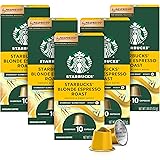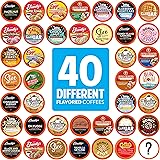Mastering the Chemex Pour-Over: A Barista’s Guide to Exceptional Brews
Achieving a truly exceptional cup of coffee at home is entirely within your grasp, especially when employing the precision of the Chemex pour-over method. As demonstrated in the video above by Mike Jones of Third Rail Coffee, the process is an art form rooted in scientific principles, ensuring that every brew maximizes the intrinsic qualities of the coffee bean. This guide will expand upon the foundational techniques presented, delving deeper into the nuances that elevate a good cup into an extraordinary coffee experience.
The Foundational Elements of Perfect Pour-Over Coffee
The journey to an ideal pour-over coffee begins long before water ever meets grounds. It necessitates meticulous attention to several critical factors, each playing a pivotal role in the final flavor profile. Understanding these elements is paramount for consistent, high-quality brewing.
Precision in Measurement: The Role of the Coffee-to-Water Ratio
The coffee-to-water ratio is a cornerstone of pour-over brewing, directly influencing extraction strength and flavor balance. A widely accepted starting point, and indeed, the method employed in the video, involves utilizing **23 grams of coffee for approximately 400 grams of water**. This translates to a ratio of roughly 1:17. For those without a precise scale, the recommendation of three flat scoops serves as a useful approximation, though the inherent variability of scoop sizes and coffee density means a digital scale is always the preferred instrument for reproducible results. Imagine if a slight deviation in coffee mass could lead to an entirely different taste; consistency is key to replicating that perfect cup.
The Art of the Grind: Unlocking Flavor Potential
The grind particle size is not merely a suggestion; it is a fundamental determinant of extraction efficiency. A **medium grind** is specified for the Chemex, creating a texture akin to coarse sand. If the grind is too fine, the water encounters excessive resistance, leading to over-extraction and a bitter, astringent cup. Conversely, a grind that is too coarse allows water to pass through too rapidly, resulting in under-extraction, often characterized by a sour or weak flavor. Adjustments to grind size are the primary lever available to home brewers for fine-tuning brew time and achieving optimal extraction uniformity. A uniform grind is also critical; disparate particle sizes lead to uneven extraction, where some particles are over-extracted while others are under-extracted simultaneously.
Water Quality and Temperature: The Unsung Heroes
The quality of water used can dramatically impact the final taste of pour-over coffee. Distilled or excessively filtered water may lack the necessary minerals to facilitate optimal extraction, leading to a flat taste. Conversely, water that is too hard can introduce off-flavors. Aim for filtered water with a balanced mineral content. Regarding temperature, the recommendation to use water “just off boil” or allowing a kettle to sit for “30 seconds” is scientifically sound. The ideal brewing temperature range for coffee is typically between 195°F and 205°F (90°C to 96°C). Boiling water can scorch the grounds, while water that is too cool will hinder the dissolution of desirable flavor compounds, often resulting in a muddy, underdeveloped brew.
The Ritual: Step-by-Step Chemex Pour-Over Mastery
With the foundational elements established, the brewing process itself becomes a structured ritual. Each step is designed to contribute to the balanced extraction of soluble solids, ensuring a vibrant and clean cup.
Pre-Wetting the Filter: Eliminating Off-Flavors and Ensuring Thermal Stability
The initial step of pre-wetting the Chemex filter is non-negotiable for those seeking perfection in their pour-over coffee. This action serves two primary, critical functions. First, it effectively rinses away any residual paper fibers or cellulosic compounds from the filter, which, if not removed, impart a noticeable “cardboardy” or papery taste to the finished brew. Imagine if this subtle yet unpleasant flavor were to taint the delicate notes of your chosen single-origin coffee. Second, and equally important, pre-wetting heats the entire brewing apparatus – the Chemex vessel and the filter itself – to the desired brewing temperature. Maintaining thermal stability throughout the brew cycle is crucial; any significant temperature drop during extraction can lead to under-extraction, often manifesting as a sour coffee. Once rinsed, the spent water must be carefully discarded, preserving the pristine environment for the coffee grounds.
The Bloom: Unlocking the Aromatics Through Off-Gassing
Following the addition of the ground coffee to the pre-wet filter, the “bloom” phase is initiated. This involves pouring just enough water (approximately twice the weight of the coffee grounds, so around 46g for 23g coffee) to fully saturate all the grounds. This brief, approximately **30 to 45-second pause**, is fundamental. During this time, trapped carbon dioxide (CO2) gases within the fresh coffee grounds are released, a process known as off-gassing. If these gases were not allowed to escape, they would create a barrier, hindering uniform water flow and preventing proper saturation of the grounds. This uneven extraction would likely result in a brew that is both sour (from under-extracted compounds) and potentially weak. The visual effect of the grounds expanding and bubbling is a clear indicator that off-gassing is occurring effectively.
The Pour: Precision and Controlled Extraction
After the bloom, the main pour begins. This phase demands patience and a steady hand. Water is poured slowly, beginning in the center of the coffee bed and expanding outwards in concentric circles. It is imperative that the water does not directly touch the sides of the paper filter, as this would allow water to bypass the coffee grounds entirely, leading to over-extraction of the grounds in the center and under-extraction of those near the periphery. The goal is to maintain a consistent water level and ensure even saturation across the entire coffee bed. This controlled infusion allows for the steady dissolution of flavor compounds. The entire pouring process, including the bloom, should ideally be completed within **three and a half to four minutes**. This timeframe is a crucial indicator of optimal grind size and pouring technique. If the water drains too quickly, a finer grind is generally required. If it drains too slowly, a coarser grind may be necessary to prevent over-extraction and bitterness.
The Final Stir: Ensuring Complete Extraction
As the final volume of water is added, a gentle stir is often employed. This technique, often a simple “X” followed by a circular motion, serves to dislodge any coffee grounds that may have clung to the walls of the Chemex. Ensuring all grounds are fully immersed in the water facilitates a more complete and uniform extraction. Without this step, some grounds might remain under-extracted, potentially impacting the overall balance of the pour-over coffee.
Once the brewing is complete and the final drips have fallen, the filter is removed. Allowing the pour-over coffee to cool slightly before serving can reveal additional layers of complexity and nuance. The meticulous execution of each step outlined here contributes to a brew that is clean, balanced, and a testament to the transformative power of a well-executed Chemex pour-over.







